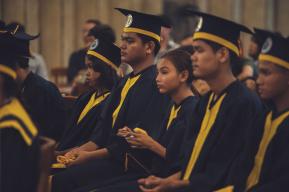News
Steering Committee for Safeguarding of the Bayon Temple of Angkor Thom’ project held

A Steering Committee meeting for the ‘Safeguarding of the Bayon Temple of Angkor Thom’ project was held on the 28th of January 2021 in Siem, Reap, Cambodia. The meeting brought together representatives from the APSARA Authority, Waseda University, the Ministry of Foreign Affairs from the Government of Japan, and UNESCO, to discuss the progress of the implementation of the Project, and jointly plan actions for 2021 and beyond.
The current Phase V of the Safeguarding of Bayon Temple of Angkor Thom project aims to support the long-term conservation of the Bayon Temple of Angkor World Heritage property. The project includes conservation of the East Façade of the Temple, the conservation of the outer and inner gallery bas-reliefs, and the structural stability of the iconic Central Tower. In addition, risk mapping is being undertaken by the APSARA Authority to identify and repair any parts of the Temple that may be dangerous to visitors.
In his opening remarks, Kim Sothin, Deputy Director General of APSARA, thanked the Government of Japan for their support, and that ASPARA looks forward to continuing to work closely with UNESCO and Waseda University for the implementation of the project in 2021 and beyond. Matsuda Yukiko, Director, Multilateral Cultural Cooperation Division, MOFA Japan expressed that she was deeply impressed with the conservation work at the Bayon Temple and that Government of Japan is very honored to be able to play an important role in safeguarding the Bayon temple for the last 25 years;
The meeting resulted in a number of important outcomes, including an agreement between the APSARA Authority, UNESCO and Waseda University to cooperate for the wider conservation of the Bayon temple, including mitigating any risks to the public/staff at the site. Furthermore, all parties agreed to continue discussing the possibilities of a Sixth Phase of the Bayon Project, leading up to the 30th anniversary of the JASA Bayon project in 2024 (1994-2024). Masanori Nagaoka, Programme Specialist for Culture, UNESCO Phnom Penh closed the meeting, and thanked all participants for their contribution to the meeting.
The Bayon Temple is of the most significant monuments within the Angkor World Heritage complex and was constructed by the powerful King-builder “Jayavarman VII” (1125-1218; reign: 1181-1218). Since 1994, Japanese Government Team for the Safeguarding of Angkor (JASA), through the assistance of the UNESCO /Japanese Funds-in-Trust, has undertaken research and conservation work at the Angkor World Heritage Site, in close partnership with the APSARA Authority.






